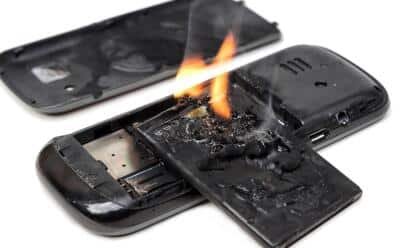All Things You Need to Know about Deep Cycle Battery
When you are choosing your electric vehicles(EV), you may have noticed that there are some lithium batteries labeled with “DEEP CYCLE”. As we all known that lithium batteries are divided into many types according to its shapes, applications and others, so what does “DEEP CYCLE” means?
A deep cycle battery is been designed to provide continuous and steady deep discharge of 80%~90%DOD. That is, you can use most of capacity of a deep cycle battery over an extended period of time. When you using a deep cycle lithium battery, you need to recharge your battery to complete the cycle. By contrast, a regular car battery is designed to provide a momentary burst of energy, typically enough to get your car started, before handing off power production to the alternator. In this case, the battery is not designed to be cycled because it should be kept fully charged at all times.
Advantages of Deep Cycle Lithium Battery
- Lighter Weight
- More Usable Energy
- More Efficient Recharging
- Longer Life
- Durability
- Safer Installation
- Environment friendly
Types of Deep Cycle Battery
Both lithium battery and Lead-acid battery can have the function of DEEP CYCLE. And Deep Cycle Batteries can be subdivided into 4 branches.
- Flooded Lead AcidDeep Cycle Battery
The standard flooded lead acid battery is the oldest car battery type in use.
Note:
- You need to charge your Flooded Lead Acid Deep Cycle Battery when the DOD drops to 50%~70%
- You need to be upright and in ventilated environment to avoid battery leakage.
- Absorbent Glass Mat (AGM)Deep Cycle Battery
The AGM battery is a type of Valve Regulated Lead Acid (VRLA) battery.
Note: This battery need unique charger because it is more sensitive to overcharging.
- Gel CellDeep Cycle Battery
The gel cell battery is another one of the VRLA batteries (like the AGM battery).
Note: It also need a special charger and regulator.
- Lithium Deep Cycle Lithium Battery
Compared with Lead-acid battery, the lithium battery is a relative newcomer.
However, lithium battery draws people’s eyes quickly by their great qualities.
Lithium ion batteries are 30% lighter than flooded cell batteries and have a usable capacity of 80-100%. They also have the fastest recharge rate and extremely long cycle life — often around 2000-5000 charge cycles.
The lithium ion battery also offers constant voltage over any rate of discharge. This means your lithium ion powered lights won’t dim slowly as the battery loses charge. Once there’s no more power, the lights will just go out.
The most recent type of lithium battery is Lithium Iron Phosphate (LiFePO4). LiFePO4 batteries are frequently used in deep cycle applications — such as solar energy banks and backup power systems.
The lithium deep cycle battery is lightweight, compact, maintenance-free with excellent usable capacity, fast recharge rate, and constant voltage. However, it’s much more expensive than lead acid batteries and needs a battery maintenance system (BMS).
Note: The BMS monitors the battery’s state and ensures the safety of operation. It’s usually equipped internally in deep cycle applications.
Usage of Deep Cycle Batteries
We’ve already touched on the fact that familiar car batteries are starter batteries. So what are deep cycle batteries used for? In general, for anything that needs continuous power for longer periods of time.
- Electric golf carts
- Electric floor cleaning machines
- Electric scissor lifts
- Electric wheelchairs
- Electric scooters
- Electric forklifts
- Recreational Vehicles
- Trolling motors on boats
- Navigational devices on a boat (when the main motor is inactive)
- Renewable Energy systems
How Long Do Deep Cycle Batteries Last?
In average, for a deep cycle battery, its lifespan is about 3-10 years. As we talked above, there are four branches in deep cycle batteries, thus their lifespan are different. Because of different maintenance, different using environments, different chargers, different battery life are different and not accurate. Here we just give out a approximate data for these batteries.
Lithium batteries: 4-10 years
Lead acid and AGM batteries: 3-6 years
Gel batteries: 3-8 years
Tips For Maintaining The Deep Cycle Battery
- When charging and discharging, the lithium battery pack needs to use a matching charger
- Inverted battery packs should be avoided during handling, assembly, and testing.
- The battery pack should be stored in a dry and ventilated environment with a temperature of not higher than 35℃ and a relative humidity of less than 85%, while staying away from flammable and explosive items.
- It is strictly forbidden to expose the battery system to outdoor exposure or rain.
- The battery pack is a high-voltage system, so attention should be paid to the safety of electricity consumption.When maintaining the lithium battery pack, do not use your hands or other metal objects, wires, etc. to touch the positive and negative electrodes of the battery pack (battery pack) at the same time to avoid electric shock or short circuit, causing danger.
- Do not reverse connect the positive and negative electrodes of the battery pack, otherwise it may cause reverse charging, causing the battery to leak, heat up, and break.
- If an abnormal situation occurs in the use of the lithium battery pack, the power supply should be disconnected immediately and the manufacturer should be contacted for maintenance in time.
- When installing, pay attention to personal safety, prevent bumps and falls, and pay special attention to high-pressure protection.
What Should We Notice When We Purchase a Deep Cycle Battery?
Basic: Ampere hour, cycle life, DOD,voltage
Special:
- Size and weight: Smaller batteries are easier to carry and reduce the weight of the vehicle.
- Rated voltage: Higher voltage batteries are used for larger loads.
- Charging time: The smaller the number, the faster the battery will charge.
- Durability: The battery is susceptible to extreme temperature, vibration, and shock.Choose the one that suits your use.
- Shelf life: The ideal shelf life of a deep-cycle battery is 10 years before it loses its maximum capacity.
- Charging method: Pay attention to the charging method of the battery.You can often use smart chargers to help regulate voltage and current.
- Temperature tolerance: Check its ability to provide electricity at different temperatures, especially if you live in a very hot or extremely cold climate.
How Long Do Deep Cycle Batteries Charge?
The actual time depends on several factors, including battery capacity, service life, battery charger, etc.
But on average, this is the time it takes for them to charge:
Flooded lead-acid deep cycle battery: 8-16 hours
AGM deep cycle battery: 5 hours
Gel deep cycle battery: 5-10 hours
Lithium deep cycle battery: 2-3 hours
Prev Article: How to Protect UAV lithium Battery?
Next Article: All Things You Need to Know about RV Lithium Battery



Leave A Comment